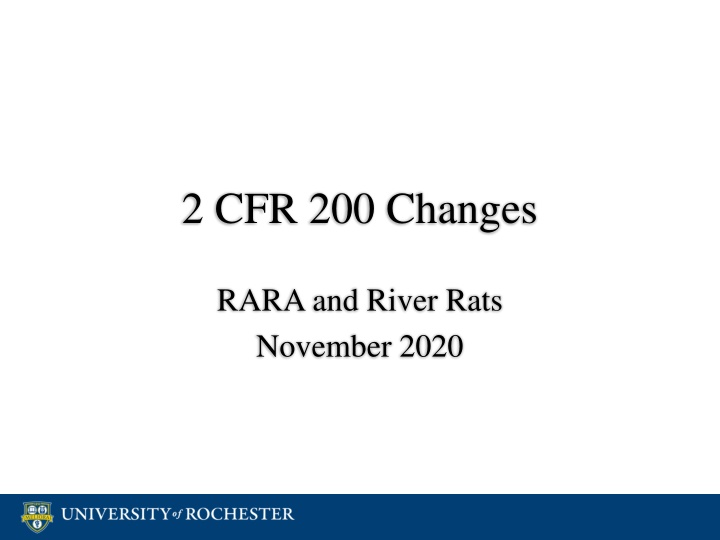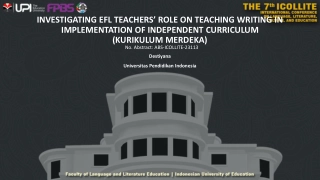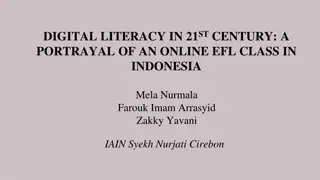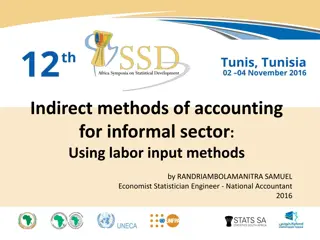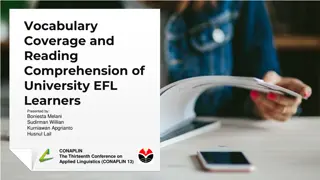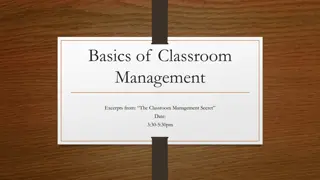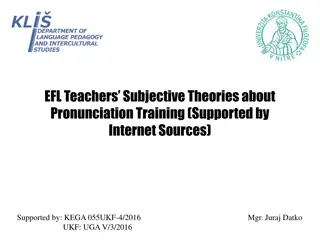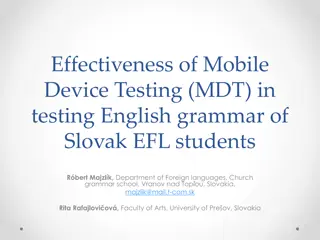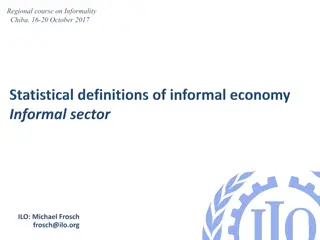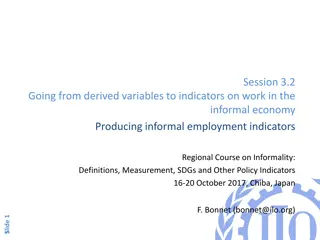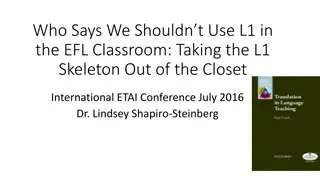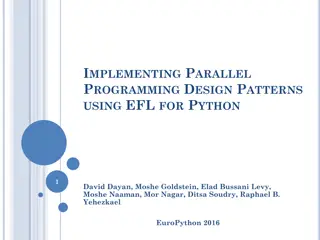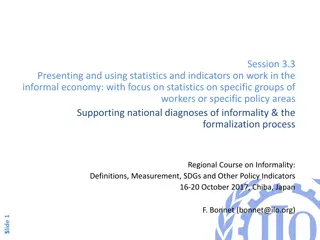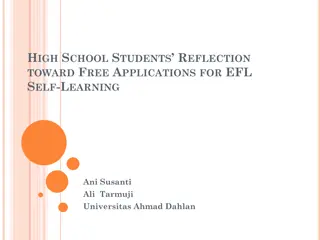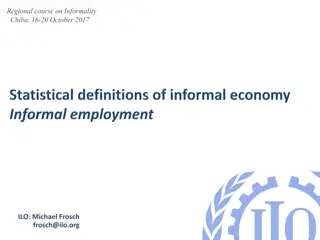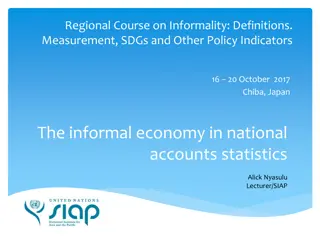Informal Assessment in EFL Classroom: Types and Strategies
Explore the main types of informal assessment in EFL classrooms, such as teacher notes, observation of body language, and use of revision units. Learn how to test language skills including productive and receptive skills, and different formats for testing like reading, writing, language (grammar), and speaking. Find tips for assessing students effectively in language learning environments.
Download Presentation

Please find below an Image/Link to download the presentation.
The content on the website is provided AS IS for your information and personal use only. It may not be sold, licensed, or shared on other websites without obtaining consent from the author.If you encounter any issues during the download, it is possible that the publisher has removed the file from their server.
You are allowed to download the files provided on this website for personal or commercial use, subject to the condition that they are used lawfully. All files are the property of their respective owners.
The content on the website is provided AS IS for your information and personal use only. It may not be sold, licensed, or shared on other websites without obtaining consent from the author.
E N D
Presentation Transcript
2 CFR 200 Changes RARA and River Rats November 2020
2 CFR 200 Reminders! 2 CFR 200 = the administrative, costing and audit principles and regulations that govern our grants and cooperative agreements Research Terms and Conditions = standard terms and conditions for research grants that were adopted by MOST of our funders
2 CFR 200 Changes Effective Dates Two provisions effective August 13, 2020 November 12, 2020 for remainder Agencies must implement SAM Registration Moving to Unique Entity Identifier (UEI) Implication for subs
2 CFR 200 Changes Numbering of Sections Must vs. Should Moving from CFDA to Assistance Listings
200.216 - New Prohibition on Certain Telecommunications and Video Services or Equipment Implements Section 889 of the NDAA Prohibits Federal grant funds from being used to contract with or procure goods and services from certain foreign entities (i.e., Huawei, ZTE, etc. Contract obligations differ Refer to the University s Compliance Guidance
200.211 - Revised Information Contained in a Federal Award Several changes to improve transparency in setting performance expectations Performance goals, indicators, targets, and baseline data must be included in the Federal award, when applicable Subsequent budget periods are subject to availability of funds, program authority, satisfactory performance and compliance .
200.301 - Revised Performance Measurement Federal awarding agencies must measure the recipient s performance to show achievement of the program goals and objectives, share lessons learned, improve program outcomes and foster adoption of promising practices
200.340 - Revised Termination Termination for cause (e.g., poor performance) has been deleted Federal awards may be terminated to the greatest extent authorized by law, if an award no longer effectuates the program goals or agency priorities Could affect subs One of most significant changes in 2 CFR 200
200.344 - Revised Closeout Increasing from 90 to 120 days Subs must submit closeout reports within 90 days Agencies still have only one year to close out an award If grantee does not submit all performance reports within one year, agency must report grantee s material failure to comply
200.325 - Revised Subrecipient Monitoring: Prime awardees (PTE s) may now rely: On the risk determination from a sub s Single Audit On the sub s cognizant audit agency to perform audit follow-up PTE s will only be required to make management decisions and perform follow up on Single Audit findings that pertain to the individual subaward Risk assessments for non-Single Audit subs will not change
Other Subrecipient Changes Must use: Federally negotiated rate if one exists (same as before) If federally negotiated rate does not exist, then can use: A negotiated rate between the PTE and sub, which can be based on a prior negotiated rate with a different PTE De minimus indirect cost rate
